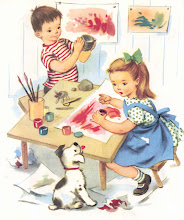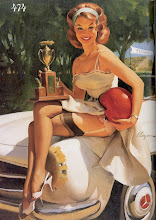Succulent envy: continuing Alice Jean’s
occasional series of guest blogs from garden historian Richard Aitken
‘George, I thought you’d never ask’
I gave a lecture in Adelaide recently to
accompany the opening of two shows I have curated as part of the AustralianGarden History Society touring exhibition Cultivating Modernism.
There was a terrific response, with standing room only at the Bradley Forum of
the University of South Australia’s Hawke Centre, so much so that Gloria
couldn’t get in.
Gloria is one of my funkiest colleagues and the
‘full house’ sign suggested to me that garden history is alive and well in
South Australia, and that a renewed appreciation of modernist gardens and
design landscapes is in the ascendant. Gloria has form in this field as the
author of two terrific monographs on modernist Australian artists, KathleenSauerbier and Jacqueline Hick, so I was sorry not to have her there.
But I had the pleasure recently of working with
Gloria on an article for Australian
Garden History on succulent envy (amongst other things). My co-editor
Christina Dyson and I had selected Gloria to participate in the Australian
Garden History Society’s editorial mentoring scheme, to work up for publication
a lecture originally given to The Johnston Collection as part of TheGarden of Ideas exhibition and lecture series.
Gloria’s topic was the modernist interior, with
a focus on the fascination for cacti and other succulents. ‘Make friends with
the cactus’ she reminded us in the title of her article (quoting another unsung
Australian modernist, Adrian Feint, writing in The Home magazine in 1928). Flower painting and interior
arrangements allowed experimentation in the modernist interior, noted Gloria,
and the spare crystalline forms of cacti were particularly appealing to
interwar and postwar generations of floral artists.
The stark forms of these plants looked back to
a primitive past, one that resonated with modernists keen to airbrush out any
link with ‘decadent’ stylistic precedents. The same spare, primeval quality of
many Australian plants also pervaded a modernist appreciation of local flora,
especially the geometric beauty of banksias and bottlebrushes with their strong
cylindrical shape and severe leaves: think Margaret Preston.
And so Gloria continued, linking the paintings
of Thea Proctor and Adrian Feint (in contrast to acknowledged traditionalists
such as Hans Heysen) with advances in floral art, led on one hand by British
florist Constance Spry, and the adoption of a diluted orientalism on the other.
It’s all fascinating stuff and these impulses have governed the ongoing floral
festival at Adelaide’s Carrick Hill, Looking Glorious. Now I wonder if
Gloria had anything to do with that?
Richard Aitken
(guest blogger)
%5Bra%5D-%5BDSC5523%5D.jpg)
%5Bmu%5D-%5B20110201%5D-cropped.jpg)
%5Bra%5D-%5BDSC5525%5D.jpg)




.jpg)
.jpg)
.jpg)
.jpg)
.jpg)
.jpg)
.jpg)
.jpg)
.jpg)
.jpg)
.jpg)
.jpg)
.jpg)
.jpg)
.jpg)
.jpg)
.jpg)
.jpg)
.jpg)
.jpg)
.jpg)
.jpg)
.jpg)
.jpg)
.jpg)
.jpg)
.jpg)
.jpg)
.jpg)
.jpg)
.jpg)
.jpg)
.jpg)
.jpg)





































































